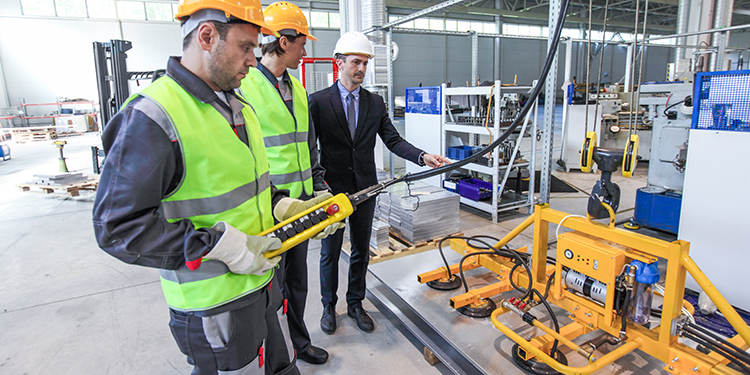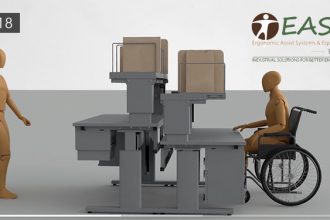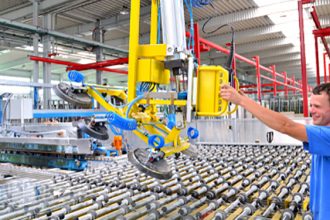Improve Stock Feeding, Part Removal From CNC Machinery With Ergonomic Handling

Manually feeding blanks into computer numerical control (CNC) machine tools can be a strenuous, awkward task for even the most fit operator. And, even though these machines (drills, borers, lathes, routers, mills, laser cutters) create a part by removing material, the finished piece is often still heavy and difficult to manipulate manually. That’s because parts can range from a 4 x 8-foot board weighing as much as 300 pounds in a wood processing operation to dense metal blanks weighing up to 1,500 pounds or more used in a metal cutting process.
Although some operations assign a pair of workers to the job of placing and removing loads, the risk of back injuries due to pulling, pushing, lifting, carrying, holding and reaching to maneuver these items remains high, regardless of the number of personnel handling the blank or finished part. There’s also an increased risk that operators may drop the item as they attempt to move it, causing damage and expensive inventory loss. Further, other operations use forklifts to handle the heaviest loads (typically in metal cutting applications). Not only can the vehicles be challenging to maneuver precisely, the forks can cause costly scratching or other damage to the part while attempting to manipulate it.
To eliminate this risk, ergonomic handling solutions such as vacuum lifters are offered to semi-automate the process (alternately, a fully robotic solution can be implemented to eliminate human intervention entirely). These systems are suspended overhead, typically to a workstation crane and hoist and feature one or more suction cups and pads that are positioned on a flat surface on the load.
When activated by the operator, the device creates a powerful vacuum that securely connects to the item. This suction — in conjunction with the crane and hoist — handles the heavy lifting of the blank or part; the operator can easily guide the load to or from an adjacent CNC machine and accurately position it. Because of the inherent dexterity of the system, incremental adjustments in placement are possible with very little effort. Additionally, because they only use air and very soft contact devices, vacuum lifters do not scratch or deform the parts they are handling.
Vacuum lifting devices are designed to be easy to use and are versatile, with a variety of end effectors available to accommodate multiple part surfaces, finishes, sizes and weights. They can be constructed for lifting capacities up to 1,500 pounds and offer quiet operation to minimize noise fatigue as well as physical fatigue. In addition to handling CNC blanks and finished parts, they can also be designed to handle metal, wood, plastic or glass sheets; corrugated boxes; sacks; barrels; buckets and other loads.
Finally, in addition to the ergonomic benefits of deploying vacuum lifters in a CNC parts handling operation, these devices also greatly enhance efficiency. They can be manipulated by a single operator, both enhancing safe distancing practices and allowing other personnel to be deployed to other tasks. Further, they can be positioned between two or more CNC machines, enabling a single vacuum lifter to feed and remove parts from multiple systems for greater throughput. And, by eliminating the extra time and fatigue associated with manually maneuvering these loads, vacuum lifters increase operational productivity — allowing more parts to be placed and removed faster for an overall boost in output.
Looking for more ways to improve ergonomics in your manual material handling operation? Download the free publication, “Ergonomic Guidelines for Manual Material Handling,” published by the members of MHI’s Ergonomic Assist Systems & Equipment (EASE) Industry Group.



